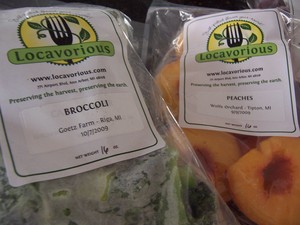A CSA embodies the relationship between an entrepreneur and an investor
/
At a recent dinner of my parents' friends, no one at the table knew what a CSA was, and I, still addressing the “adults†as “Mr & Mrs," attempted to enlighten them. “CSAs are shorthand for Community Supported Agriculture. You purchase a share at the beginning of the season and then receive bushels of whatever is in season every week or so. It is a partnership between the farmer and the eater.â€
Mrs X responded loudly, “That is the most un-American thing I have ever heard of, what happened to the idea of self-sufficiency? That reeks to me of socialism!†(It helps to imagine a glass of Sauvingon Blanc being waved around when you hear this.)
My default action when that particular emotional hot button word (aka grenade) is lobbed into the conversation is to hide under the table, or at the very least flee to the ladies room. However, an attack on healthy, local food is too important for me to ignore. Let me see if I can break down Mrs. X’s point of view (after all, she knew me as a babe).
100 strangers and I pay $400 to a farmer. The farmer purchases seeds (capital), pays for gasoline for the tractor, buys a new pair of mud boots for the season (operating expenses), hires some people to help plant the seedlings (labor) and feeds herself while caring for the green shoots growing in the fields under the rain and sun.
My initial monetary investment is transformed into lettuce, beets, chard, kale, bok choy, pole beans, squash, peppers, cucumbers, tomatoes, watermelon, raspberries, strawberries and eggplant (to name a few).
If I were to purchase a CSA share in early March, I'd expect to start receiving food in May, and that abundance would continue till October (timing depends on the farmer). The dividend percentage on my initial investment burns through the capital every year, and thus I will need to reinvest in shares the following year (I have eaten all of the profits).
If the potatoes are hurt by the blight and the squash catches a fungal wilt, my food dividend will be commensurately smaller, as will the shares of the other 100 investors. When the farmer has a productive season, my larder will be filled to bursting as I share in the food profits.
The Farmers Marketer blog lists information about CSAs from Two Creeks Organics (I wrote about my visit to them in January), Tantre Farm, Pregitzer Farm, Portage River, Old Pine Farm Meat CSA, Needle Lane Farms, Frog Holler, Community Farm of A2, Sunseed Farm, Carpenter’s Greenhouse, and Capella Farm. I would add to this good list the Zilke Vegetable Farm, Our Family Farm and Down on the Farm - a CSA offered by the farmers in the Amish Homer Community (contact Down on the Farm, 29910 R Drive S, Homer, MI 49245, or call 517-542-2025 at 8 a.m. and ask for Amos). This list in no way is complete, but it will give you a good place to start. I recommend asking your favorite farmer at the market whether they offer one.
Personally, the best thing I have found about CSAs are the relationship between the consumer and the farmers: heck, let us say it - friendships.
Socialism? I don’t think so. For me a CSA embodies the relationship between an entrepreneur and an investor - and the dividends are paid in food - a very American and unique relationship. Oh say can you CSA?
Here is the link to the annarbor.com article!




